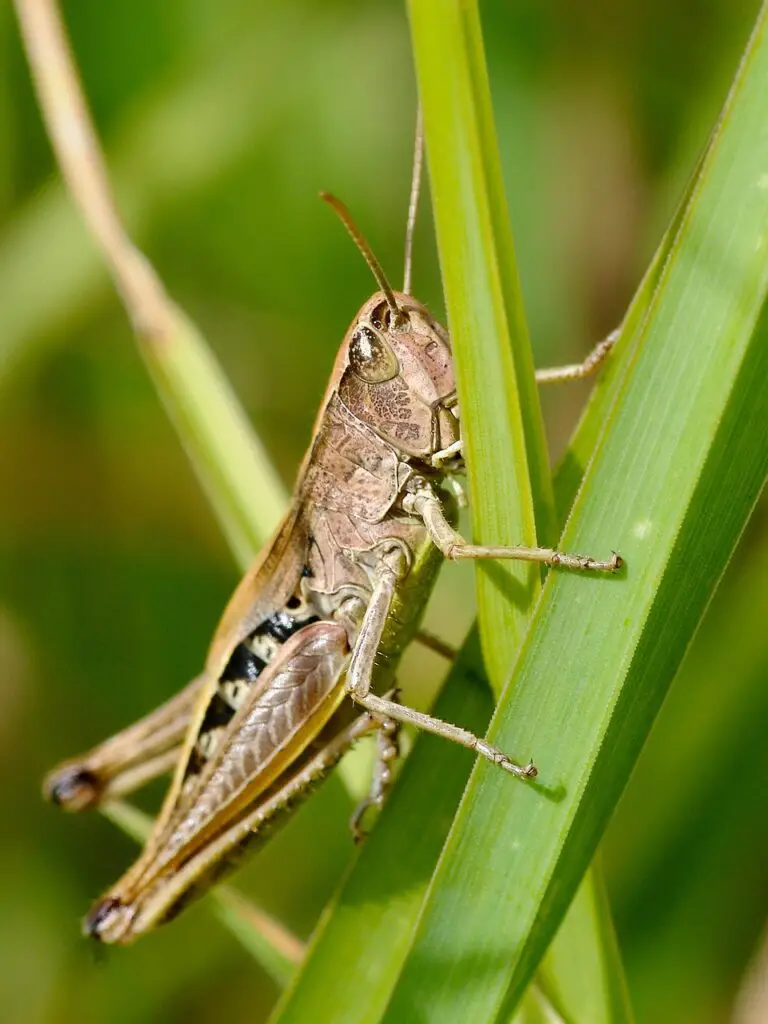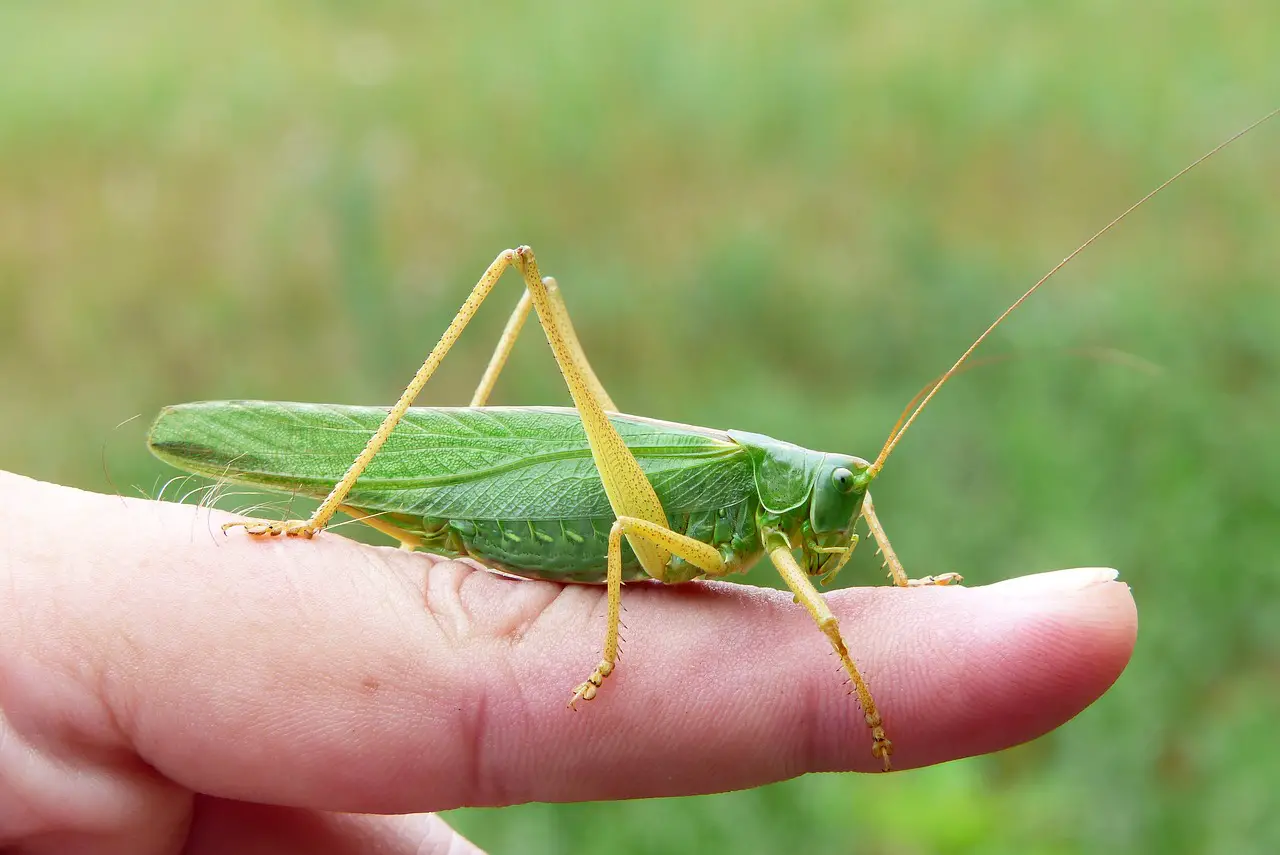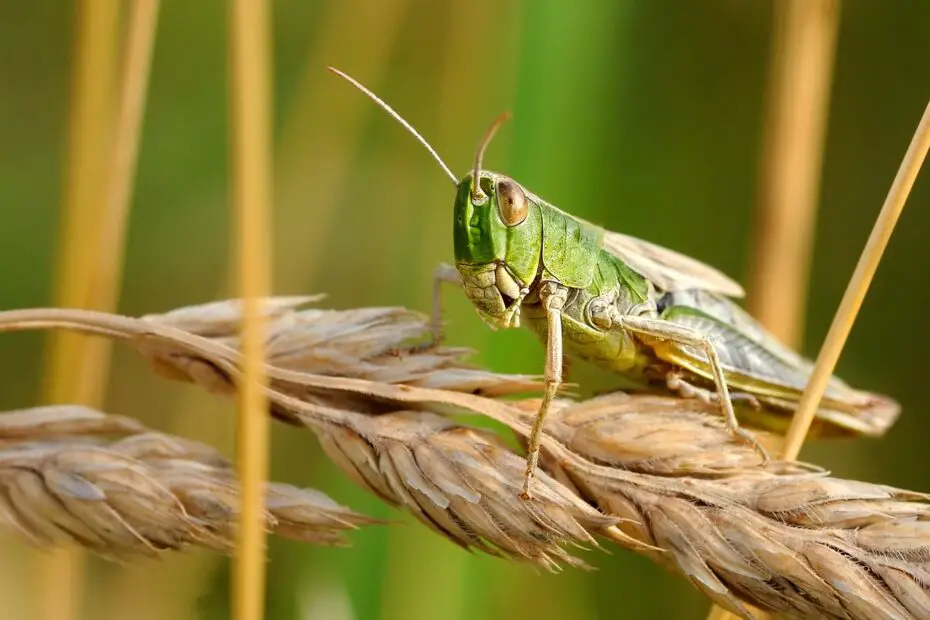Locust vs grasshopper: What is the difference? Locusts and grasshoppers are often confused due to their similar appearance and behavior. While they belong to the same insect order, Orthoptera, there are distinct differences between these two fascinating creatures. In this article, we will explore the characteristics, behavior, and ecological impact of both locusts and grasshoppers, highlighting their differences and similarities.
You may also want to know if praying mintis bite?
1. Introduction Locust vs Grasshopper
In this section, we will provide a brief overview of locusts and grasshoppers and outline the purpose of the article.
2. What are Locusts?
2.1 Definition and Characteristics
Locusts are a type of grasshopper that undergoes a dramatic transformation in behavior and appearance under certain conditions. We will delve into the specific characteristics that differentiate locusts from other grasshoppers.

2.2 Life Cycle of Locusts
Locusts have a unique life cycle that involves solitary and gregarious phases. We will discuss the stages of their life cycle and the triggers that lead to the formation of swarms.
3. What are Grasshoppers?
3.1 Definition and Characteristics
Grasshoppers, on the other hand, are commonly known insects that belong to the same family as locusts. We will explore their physical characteristics and behaviors that distinguish them from locusts.
3.2 Life Cycle of Grasshoppers
Grasshoppers follow a more predictable life cycle compared to locusts. We will explain the different stages of their life cycle, including egg deposition, nymphal development, and adulthood.
4. Locust vs Grasshopper – Differences
In this section, we will outline the key differences between locusts and grasshoppers, focusing on their behavior, habitat, physical appearance, swarm formation, and feeding habits.
4.1 Behavior and Habitat
Locusts and grasshoppers exhibit different behaviors and prefer distinct habitats. We will discuss these variations and how they contribute to their respective survival strategies.
4.2 Physical Appearance
While locusts and grasshoppers share similarities in their physical structure, there are noticeable differences in certain features. We will highlight these differences, including body size, coloration, and wing morphology.
4.3 Swarm Formation
One of the most intriguing aspects of locusts is their ability to form massive swarms. We will explore the triggers and mechanisms behind swarm formation and compare it to the behavior of grasshoppers.
4.4 Feeding Habits
Locusts and grasshoppers have different feeding habits, which influence their ecological roles and impact on vegetation. We will examine their feeding preferences and how they interact with plant communities.
5. Locust vs Grasshopper – Similarities
Although locusts and grasshoppers have distinct characteristics, they also share several similarities due to their common evolutionary heritage. In this section, we will discuss their taxonomy, classification, and ecological roles.
5.1 Taxonomy and Classification
Locusts and grasshoppers belong to the same insect order, Orthoptera, and share many taxonomic similarities. We will explore their classification and the relationship between these two groups.

5.2 Ecological Roles
Both locusts and grasshoppers play important ecological roles in their respective ecosystems. We will examine their contributions to nutrient cycling, prey-predator relationships, and their interactions with other organisms.
6. Locust vs Grasshopper: Economic and Environmental Impact
Locusts and grasshoppers have significant economic and environmental impacts, albeit in different ways. This section will highlight the consequences of locust plagues and the damage caused by grasshopper infestations.
6.1 Locust Plagues
Locust swarms can cause widespread devastation to crops and agricultural landscapes. We will explore the economic losses and food security challenges associated with locust plagues, as well as the efforts taken to mitigate their impact.
6.2 Grasshopper Damage
Grasshoppers, while less notorious than locusts, can still inflict substantial damage on crops and vegetation. We will discuss the feeding habits of grasshoppers, the types of plants they target, and the consequences for farmers and ecosystems.
7. Control and Management
Efforts to control locusts and grasshoppers require a multi-faceted approach that considers ecological balance and sustainable pest management. In this section, we will outline various methods used to control and manage these insect populations.
7.1 Integrated Pest Management (IPM)
Integrated Pest Management (IPM) strategies aim to minimize the use of chemical pesticides and focus on holistic approaches. We will explore the principles of IPM and how they can be applied to locust and grasshopper control.
7.2 Biological Control Methods
Biological control methods involve using natural enemies, such as predators, parasites, and pathogens, to regulate locust and grasshopper populations. We will discuss the effectiveness of these methods and their environmental implications.
7.3 Chemical Control Methods
Chemical control methods, such as insecticides, are sometimes necessary to manage locust and grasshopper infestations. We will provide an overview of these methods, including their advantages, limitations, and potential impacts on the environment.
8. Conclusion
In conclusion, locusts and grasshoppers are fascinating insects with unique characteristics and behaviors. While they share some similarities, such as their classification and ecological roles, there are notable differences in their behavior, appearance, and impact on the environment. Understanding these distinctions is crucial for effective pest management and conservation efforts.
Frequently Asked Questions (FAQs)
- Are locusts and grasshoppers the same species?
- No, locusts and grasshoppers belong to the same insect order, Orthoptera, but they are different species with distinct behaviors.
- What triggers locust swarms?
- Locust swarms are triggered by specific environmental conditions, such as rainfall patterns, vegetation availability, and crowding.
- Can grasshoppers cause significant crop damage?
- Yes, grasshoppers can cause substantial crop damage, especially when their populations reach high densities.
- How do biological control methods work for locust and grasshopper control?
- Biological control methods involve introducing natural predators, parasites, or pathogens that specifically target locusts and grasshoppers. These natural enemies help in reducing the population of these insects by preying on them or causing infections.
- Are there any natural predators of locusts and grasshoppers?
- Yes, several animals, including birds, reptiles, and mammals, feed on locusts and grasshoppers. Some examples include certain species of birds like sparrows and quails, lizards, frogs, and even rodents.
- What are the long-term ecological impacts of locust and grasshopper infestations?
- Locust and grasshopper infestations can have significant ecological impacts. They can cause vegetation loss, affect the balance of plant communities, and impact the food chain by reducing the availability of resources for other animals.
- Can locust and grasshopper populations be predicted or monitored?
- Scientists and researchers employ various monitoring techniques to track locust and grasshopper populations. These methods include aerial surveys, ground-based observations, and the use of remote sensing technologies to detect vegetation changes.
- What are the effects of locust plagues on human populations?
- Locust plagues can have severe consequences for human populations. They can lead to food shortages, economic losses for farmers and agricultural communities, and threaten food security in affected regions.
- Are there any ongoing research efforts to develop new methods for locust and grasshopper control?
- Yes, researchers are continuously studying locusts and grasshoppers to develop more effective and sustainable control methods. This includes exploring genetic approaches, such as using pheromones or manipulating the insect’s own biology, to disrupt their behavior and reproduction.
- How can farmers protect their crops from locust and grasshopper damage?
- Farmers can implement various preventive measures, such as crop rotation, habitat management, and the use of physical barriers like nets or fences. They can also adopt integrated pest management strategies that combine different control methods to minimize damage.
In conclusion, understanding the differences and similarities between locusts and grasshoppers is essential for effective pest management and conservation efforts. By employing a combination of integrated pest management strategies and ecological approaches, it is possible to mitigate the economic and environmental impacts of these insects and ensure a harmonious coexistence with them.
